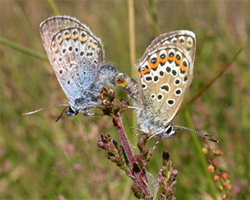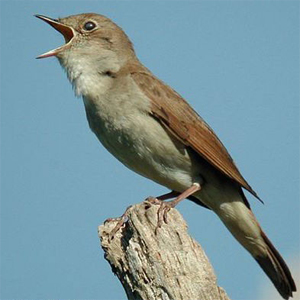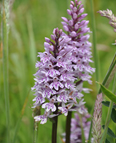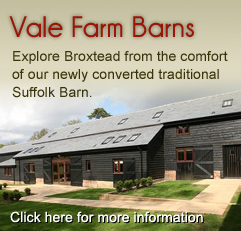Biodiversity
The Broxtead Estate has a significant area of land which is of national nature conservation interest. The Sutton and Hollesley Heaths are Special Sites of Scientific Interest (or SSSI) and represent one of the largest remaining fragments of the Sandlings Heaths left in Suffolk. This land is managed in conjunction with the Suffolk Wildlife Trust and works include grazing by the Trust’s flock of (mainly) Hebridean sheep,and Exmoor ponies, for scrub clearance and bracken control.
Sheep
Traditionally, sheep were the mainstay of the estate eco-system. The heaths or ‘sheepwalks’ provided food for the sheep in early summer and also in winter when heather shoots protruded above the snow. Turnips and clover grown by the estate provided “in field” extra winter food. The sheep dung fertilised the fields improving fertility and a crop of wheat would be harvested from the land one year in four. This and the wool and mutton sales represented the major source of income for the estate until the beginning of the 20th century.
With technical innovations and changes in economics there was a decline in the number of sheep between the First and Second World Wars and the system disintegrated. Once heaths were no longer part of an integrated farming system, there was no incentive to manage them.
The role of the sheep today is to maintain this rare habitat that without intervention by grazing, would revert to pine and silver birch scrub. This “managed” habitat is vital for the survival of many rare species of birds and insects.
Other Wildlife
 The Broxtead Estate is home to the rare Silver-studded Blue Butterfly.
The Broxtead Estate is home to the rare Silver-studded Blue Butterfly.
The Silver-studded Blue takes its name from the light blue reflective scales found on the underside of most adults and which are quite visible when light reflects off them. The males are blue while the female is a less-conspicuous brown. This delightful butterfly is found in close-knit colonies, with individuals rarely flying any distance. Most colonies contain less than a thousand adults. However, a few colonies are huge, with the number of adults measured in tens of thousands, providing an amazing spectacle.
Birds
Here at Broxtead we can boast many rare species who are thriving with such an abundance of good habitat. We have compiled a list of birds to look out for with a brief description.
Woodlark – here all year round, thrives on heathland
Dartford Warbler – small dark long-tailed warbler which suffered decline from severe winters to a few pairs in the ‘60’s.
Hobby – bird of prey same size as a Kestrel. Arrives in UK from April and leaves in September. Eats insects and small birds.
Nightjars – nocturnal birds – look for them hawking at dusk or dawn. Male bird has a churring song, rising and falling with a ventriloquial quality. Arrives in April/May and leaves in August/September. Eats moths and beetles. In decline and globally threatened.
 Tree Pipit – here in April through to September, a heathland bird that has declined in the last 25 years.
Tree Pipit – here in April through to September, a heathland bird that has declined in the last 25 years.
Stonechat – this bird has a sharp loud call that sounds like 2 stones being tapped together.
Nightingale – slightly larger than a robin. Arrives in April and sings until late May and early June, day and night. Leaves in July to September.
Yellowhammer – here all year round but recently in decline.
Nightingale – slightly larger than a Robin. Arrives in April and sings until late May and early June, day and night. Leaves in July to September.
Plant Life
Close to Hollesley Common, we have the rare Red-tipped cudweed (Filago lutescens) and patches of Harebells on our open heathland.
Fields in this area are commonly bordered with Scots Pine belts to help halt the erosion of the light sandy soil. In addition we have mixed woodlands with Oak, Hornbeam, Sweet Chestnut, Hawthorn, Birch Cherry, and Gean.
Conservation objectives
 We aim to enhance and link heathland areas. Restoration of lowland heath is of international importance.
We aim to enhance and link heathland areas. Restoration of lowland heath is of international importance.
We currently maintain and improve the mosaic of associated wetland, and meadow habitats and restore unmanaged woodland for wildlife and timber.
We work closely with the Suffolk Wildlife Trust in achieving these objectives.





